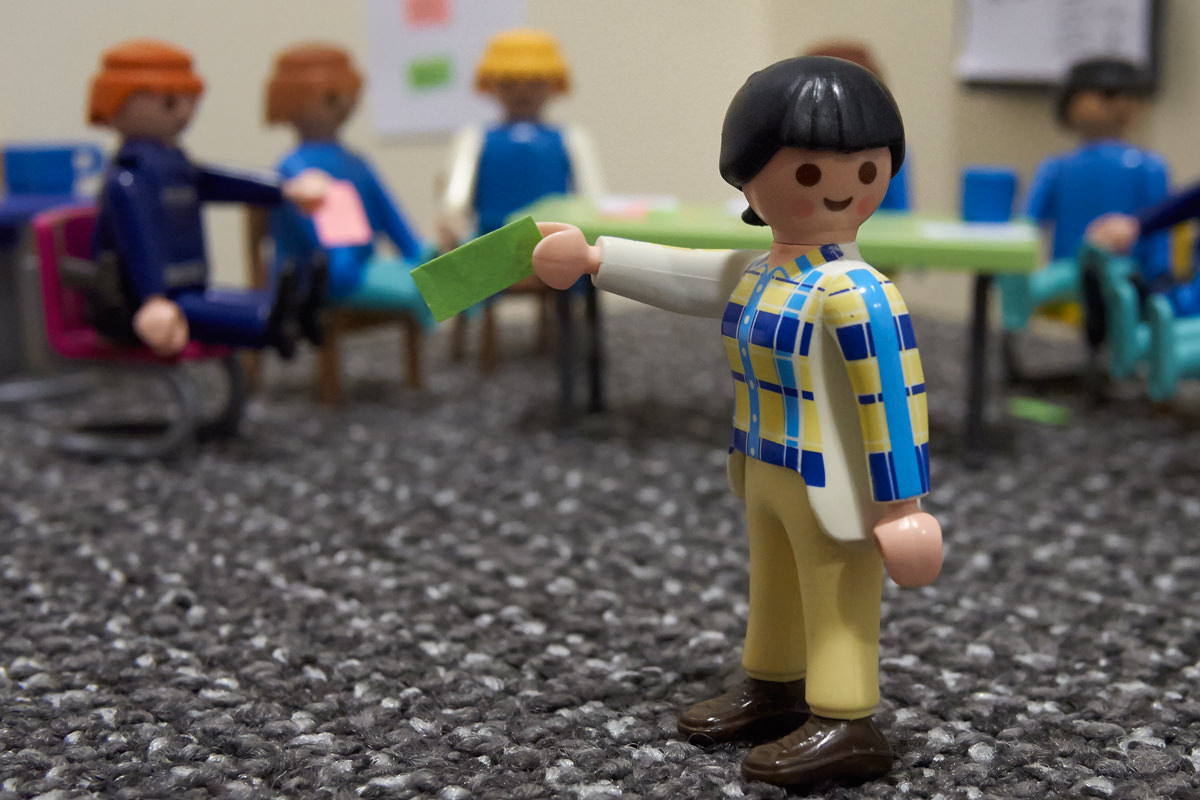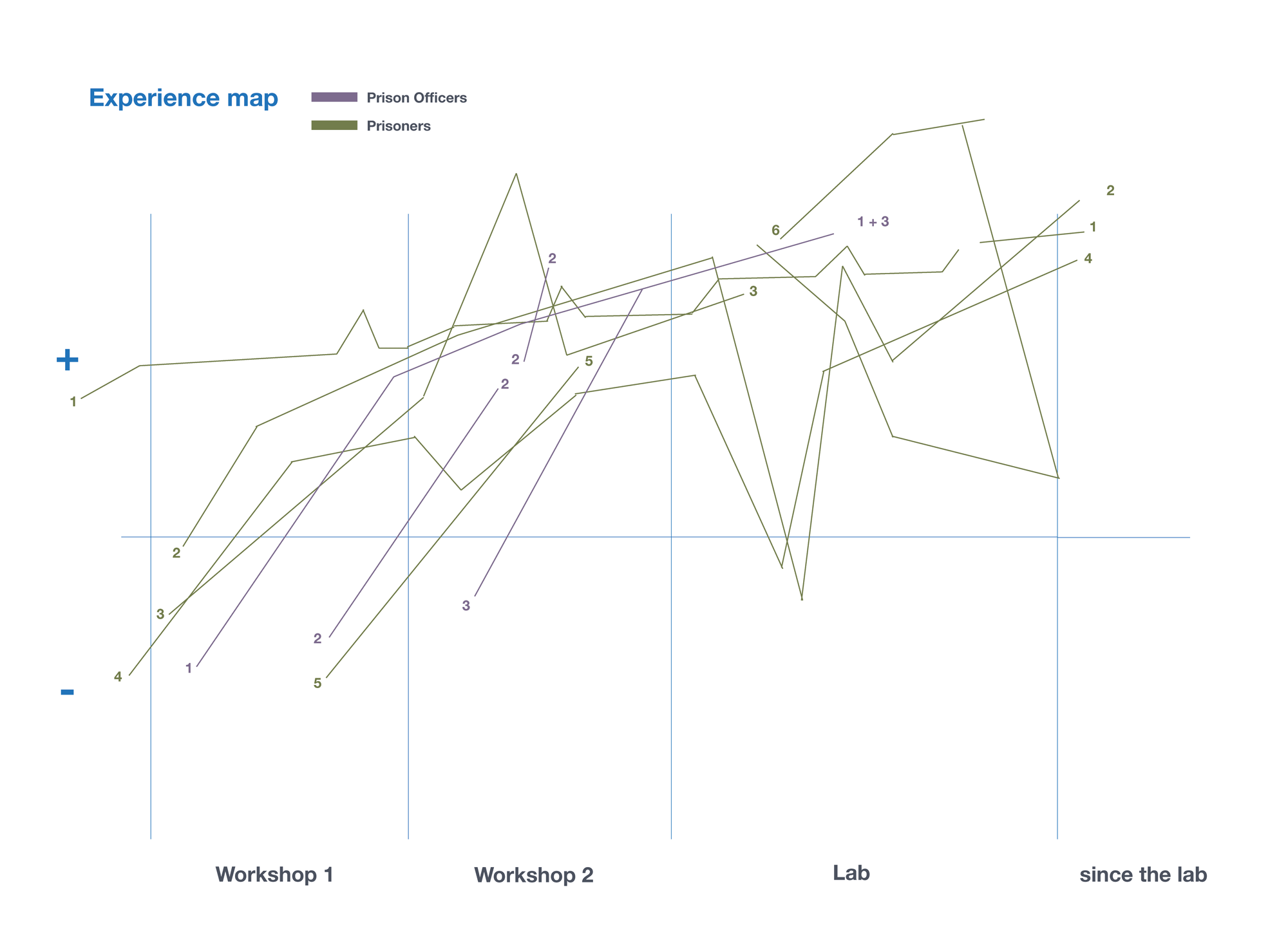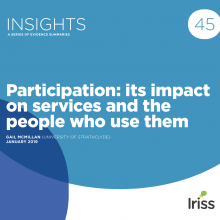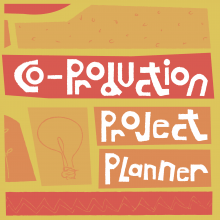Context
Positive Prisons? Positive Futures (PPPF) is a Scottish charity that uses its collective experience of the criminal justice system, to benefit others still within the system, or shortly after release.
Currently HMP Perth provides various listening services and support for prisoners, but mentoring is only conducted informally between prisoners and prison officers. PPPF wanted to experiment with formalising mentoring between prisoners and staff to build the confidence and experience of the mentee to the point where they could confidently start to make decisions for themselves and would not be afraid to ask for help. Ultimately, it would aim for a culture where this process of providing and seeking help was not viewed as a weakness.
Experimenting in this context would not have been possible without the knowledge, experience and time of each person involved. Thank you to everyone who took part.
This case study can be read in conjunction with 'How to run an experience lab' and another case study - Working with outcomes.
Main focus - practitioner experience
In prison, people have clear roles and boundaries. To understand whether prisoners and staff could mentor one another in a prison and make this a cultural norm, PPPF and Perth Prison acknowledged both prisoners and staff may a) not have the capacity or inclination to mentor one another; and b) may feel uncomfortable negotiating the changes in their boundaries. Therefore, the purpose of the lab was to support prisoners and staff to experience instances of mentoring, explore how they could work together as colleagues, and to uncover the provisions that would need to be in place to support this.
Outcome of the lab
This lab was not successful in creating an experience which enabled prisoners and staff to explore how they could work together. The reasons for this are described in the section 'What worked well and lessons learned'.
Despite this failure there were other successes; in particular positive outcomes for prisoners.
From the collaborative sessions Iriss facilitated and activities people engaged with together, prisoners reported that they felt positive about their involvement in this project, stating it 'gave [them] a sense of achievement' and that they 'felt at ease', 'comfortable' and 'appreciated' during the lab process. They also made comment about their personal learning through the process, stating 'I realised I had more skills than I thought' and 'I learnt I am able to help someone...I have patience and the ability to listen without prejudice'.
Prison officers explained that they were more interested in the potential implementation of formalised mentoring in the prison, stating that by the end of the project the 'idea of mentoring became clearer and made more sense' and 'I could see it [mentoring] having a significant place within the prison and the roles both staff and prisoners could play'. Prison officers also stated that they enjoyed working with the prisoners during this project, referring to them as a 'positive group of individuals'.
People involved
Prisoners x 7

What they knew:
- How to provide and receive informal peer-mentoring
What they had experienced:
- Ongoing experience of serving a sentence in prison
- The barriers to working with prison officers or asking them for mentoring support
What they wanted to know:
- How to work collaboratively with prison officers
- How to provide and receive formal peer-mentoring
Prison Officers x 3

What they knew:
- How to provide informal mentoring to prisoners
What they had experienced:
- Working in a prison with prisoners and prison officers
- The barriers to working with prisoners or providing them with mentoring support
What they wanted to know:
- How to work collaboratively with prisoners
- How to provide formal peer-mentoring
Iriss: Project Manager x 3

What they wanted to know:
- Lab methodology
- Running an experience lab in a prison context
What they knew:
- Designing and facilitating workshops
PPPF: National Coordinator x 1; Communications and Information x 1

What they knew:
- How to mentor ex-offenders upon release
What they had experienced:
- Working with ex-offenders to help rehabilitate them into the community
- Past experience of serving a sentence in prison
What they wanted to experience:
- How to provide peer-mentoring within prisons in Scotland
- How to help prisoners and prison officers to work together as colleagues in a prison setting
HMPP Management x 2
(NB: Although not actively involved in the lab process, the managers at HMPP provided essential background information about the prison context)
What they knew:
- The positive aspects of providing prisoners with mentoring while serving a sentence in prison
What they had experienced:
- The barrier restricting the opportunity for prison officers and prisoners to work together as colleagues
- The barriers preventing prison officers providing mentoring support to prisoners
What they wanted to know:
- How to provide formal peer-mentoring within prisons in Scotland
- How prisoners and prison officers could work together as colleagues
- How to provide formal peer-mentors within HMP
Working with outcomes: experience lab
How this lab was set up and run is described in the Exploring role and boundaries experience lab, project plan1.
Although PPPF and HMPP wanted to use this methodology to enable the development and implementation of formalised peer-mentoring within a prison setting, we believed trialling this service in a lab may have overlooked institutionalised barriers to these ambitions being realised. Therefore prisoners and prison officers were invited to volunteer to collaboratively develop a code of conduct that supported both groups' needs for the provision of peer-mentoring support. This meant that the lab was used to provide an experience of providing and receiving mentoring support.
To ensure everyone experienced one-to-one mentoring, the group was split into five pairs (see figure). Within each pair, one person was 'acting' as themselves as a mentor. The other person was given a mentee persona and scenario2 to role play. This was to ensure that no one felt the need to disclose personal information within the lab setting.
Each pair worked through the lab process twice. The first time a member of staff from Iriss or PPPF silently observed each pairing. The second time the 'observer' prompted the use of the co-designed code of conduct. In cases where a prisoner had been paired with a prison officer, they were invited to switch roles so that the prisoner could also experience delivering peer-mentoring.
People's experiences
Upon completion of the lab it was important to evaluate the experience and learning of each participant. These experience maps3 illustrate prisoner and prison officer's experiences during this process and were used alongside a series of questions4.

What worked well/lessons learnt
What worked well:
- A cross section of prisoners and staff took part in the project so they were able to share different experiences and knowledge and share their views of these discussions throughout the prison
- A space was created that enabled staff and prisoners to be open and honest about positive and negative aspects of their roles and realistic about boundaries
- Providing prisoners with copies of workshops notes, blog posts, agendas and evaluations was welcomed so there was an understanding about the reach of the project
Lessons learned:
- It was difficult to design a lab in a prison as there were restrictions about where the lab could take place.
- Consequently the lab became a workshop where people learned something but did not test something in situ5.
- Scenarios and roles need to be suitable for people who will use them.
Impact of lab methodology
Since completion of the lab process, HMPP Managers and PPPF have been working together to begin formalising peer-mentoring within the prison.
PPPF are planning how to provide the prisoners involved in the lab process with additional mentoring training and are working towards this being formalised with the Scottish Qualifications Authority.
PPPF and Managers from HMPP are looking into working together to formally train groups of prisoners and prison officers so that peer-mentoring will become embedded within HMPP.
Managers from HMPP have invited prisoners involved in the lab to take on formalised roles as peer-mentors. In addition, prison officers involved in the lab coordinate the activity of peer-mentors in the prison and continue to develop the working relationships established during the lab process.
PPPF are also seeking to work with other prisons in Scotland to highlight the importance of peer-mentoring and provide training.
Endnotes
- Iriss (2014) Exploring role and boundaries experience lab, project plan, Glasgow Iriss
- Ibid.
- Ibid.
- Ibid.
- Ibid.
Written by: Fiona Munro, Photography by: Gayle Rice and Ian Phillip
PLAYMOBIL figures used with kind permission of Geobra Brandstätter GmbH & Co. KG, Germany. PLAYMOBIL is a registered trademark of Geobra Brandstätter GmbH & Co. KG, for which also the displayed PLAYMOBIL toy figures are protected.




